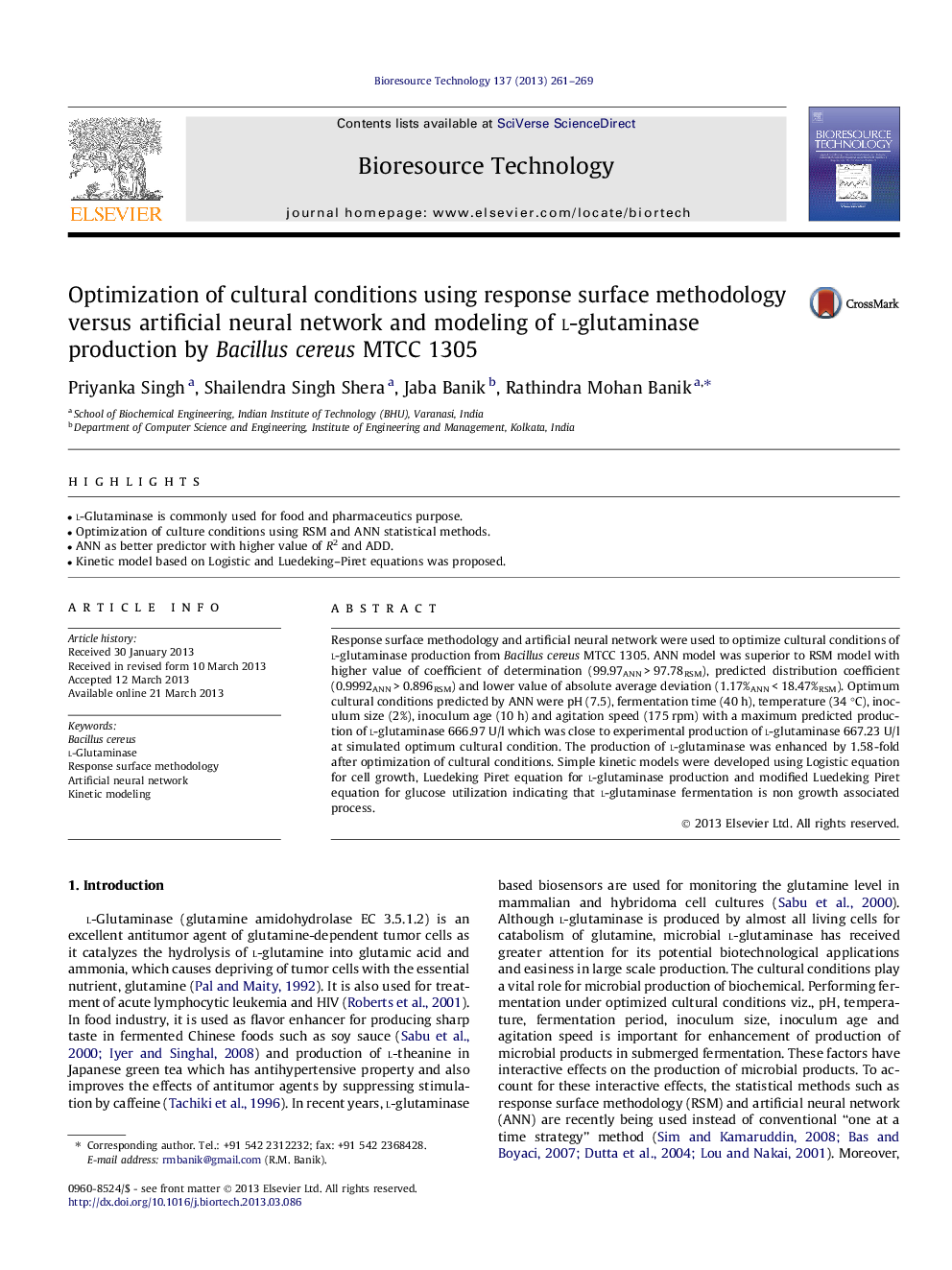| Article ID | Journal | Published Year | Pages | File Type |
|---|---|---|---|---|
| 681158 | Bioresource Technology | 2013 | 9 Pages |
•l-Glutaminase is commonly used for food and pharmaceutics purpose.•Optimization of culture conditions using RSM and ANN statistical methods.•ANN as better predictor with higher value of R2 and ADD.•Kinetic model based on Logistic and Luedeking–Piret equations was proposed.
Response surface methodology and artificial neural network were used to optimize cultural conditions of l-glutaminase production from Bacillus cereus MTCC 1305. ANN model was superior to RSM model with higher value of coefficient of determination (99.97ANN > 97.78RSM), predicted distribution coefficient (0.9992ANN > 0.896RSM) and lower value of absolute average deviation (1.17%ANN < 18.47%RSM). Optimum cultural conditions predicted by ANN were pH (7.5), fermentation time (40 h), temperature (34 °C), inoculum size (2%), inoculum age (10 h) and agitation speed (175 rpm) with a maximum predicted production of l-glutaminase 666.97 U/l which was close to experimental production of l-glutaminase 667.23 U/l at simulated optimum cultural condition. The production of l-glutaminase was enhanced by 1.58-fold after optimization of cultural conditions. Simple kinetic models were developed using Logistic equation for cell growth, Luedeking Piret equation for l-glutaminase production and modified Luedeking Piret equation for glucose utilization indicating that l-glutaminase fermentation is non growth associated process.
